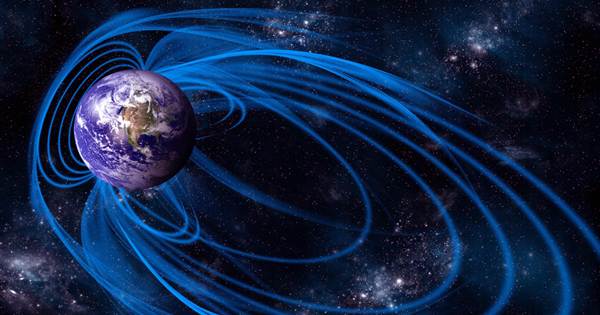The most famous example of this is the South Atlantic Anomaly (SAA), which extends from South America to Zimbabwe. There are some strange things about the earth’s magnetic field; some places are strangely strong or weak. We still don’t know what caused the discomfort, but scientists have now found it with evidence millions of years old, surviving many catastrophes in the direction of the field.
The difference between the field strength of the SAA and the comparative locations is increasing. Some have suggested that SAA is currently associated with a weakening in the global arena or with the increasingly rapid movement of the Earth’s magnetic poles, which has aroused research stimuli at the scene. The Earth’s magnetic field was so weak in the SAA, it was known to have errors when the satellites were passing; In addition to field protection, they are exposed to cosmic rays and radiation from the sun.
As the SAA relates to recent changes, it would be understandable that this would be a new phenomenon, but Yale engineers, PhD students at the University of Liverpool, have shown that the SAA is actually much older. Iron-rich lava flows are magnetized by a magnetic field when cooled and then maintained, providing a record of the local field strength after they have formed.
The volcanic island of St. Helena, most famous as Napoleon’s final abode, is located in the middle of the SAA. Engineers collected rock from 34 eruptions that occurred 8 to 11 million years ago, and the proceedings of the National Academy of Sciences reported that the existing field was well within the boundaries of St. Helena at that time.
“Irregular behavior of the geomagnetic field in the South Atlantic region is appearing over such a long period of time.” Previous studies have indicated that SAA existed 46,000-90,000 years ago. Engbers said in a statement, “Our study … reveals that the irregularities in the South Atlantic magnetic field are not one-to-one, but similar anomalies existed eight to 11 million years ago.”
Engineers note that this means that the indication that the Earth’s field is about to flip is less likely to be inconsistent. While we know that such catastrophes in the direction have occurred at least nine times in the last 5 million years, no one knows how to trigger them or how to recognize the signs coming. This discovery suggests the idea of the direction of the ancient magnetic field that geologists relied on to reconstruct the previous positions of the continents because these assumptions were not true.
Although we far from fully understand the causes of inconsistencies, we do know that where the core meets the mantle there is a huge region that is magnetized in the opposite direction of the global field. On the upper surface, it creates a partial offset by measuring as SAA.
















